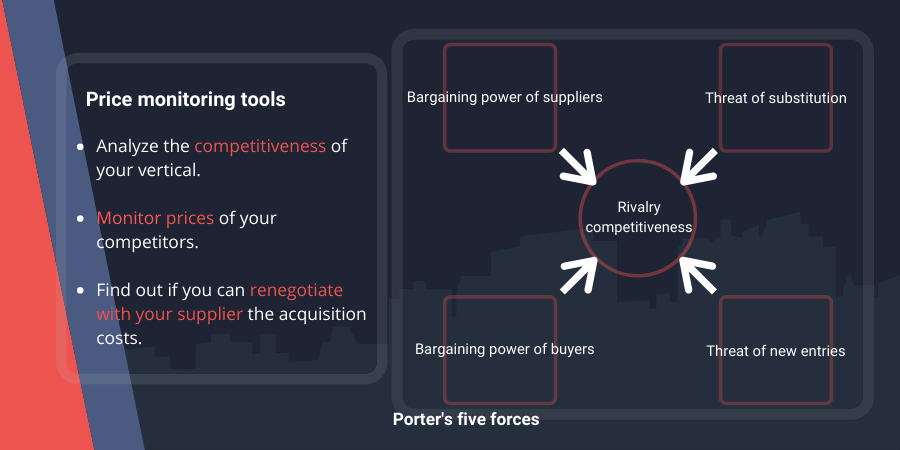
Have you ever wondered who has the bargaining power with suppliers? Being able to negotiate competitive acquisition costs might be crucial to stand out from competition and be capable of offering optimal prices that bring more traffic to your e-commerce store.
Currently, the situation for e-commerce business finds itself under dense competitiveness, given the high number of different stores that offer similar products. Right before this huge rivalry stands the consumers, who tend to decide where to buy primary looking after the price of a product. There may be other factors that influence their decision, but the price is definitely one of the most critical aspects.
Given this situation, perhaps it seems complicated for the e-commerce business to find ways to get a competitive advantage over its rivals. Nonetheless, it turns out to be indispensable to watch competitors’ movements in order to get more competitive. Besides, there are automating tools with which e-commerce can:
It is essential to understand how the market you are working in functions and changes. That will be useful when anticipating future competition’s movements and adapting products’ prices to the same competitive level of the market.
If you receive updated information of the state of the market, your store is going to not only earn competitiveness but is also going to identify possible prices trends inside your vertical. By using this data, you can overtake movements and find more sales opportunities.
Taking as a reference Porter’s five forces theory, by using monitoring tools you can control both competitiveness rivalry (as you can get continuously updated the info of their movements) and the bargaining power of suppliers as well.

When you study the evolution of your competitors’ prices, you can detect if they get cheaper acquisition costs. Imagine a competitor has in its catalog the same product as you do. If they can lower their price way more than you do, perhaps they have cheaper costs. That means you can renegotiate your prices with suppliers in order to save money and optimize them.
If you have clearly identified who your rivals are, by monitoring the evolution of their prices, you will be able to understand what the pricing strategy they are employing is. This, as well as providing you with key information about possible future movements, will also give you more competitiveness and anticipation opportunities when it comes to making decisions.
We explained that by making a competitive price comparison, you could improve your competitiveness level in the market, but how is that? It is easy. If you understand how the market you work in behaves, you can adjust much better prices for your products and stand out among the great existing competitive rivalry.
These are the three main features that price monitoring tools can offer. Even though you could make these processes manually, it turns out to be way more effective and economical if you use automated solutions. Having someone manually monitoring all the products of all your rivals would be a significant and costly amount of time and money. Besides, the quality and optimization level of the results would not be as good as the ones obtained using automated tools.